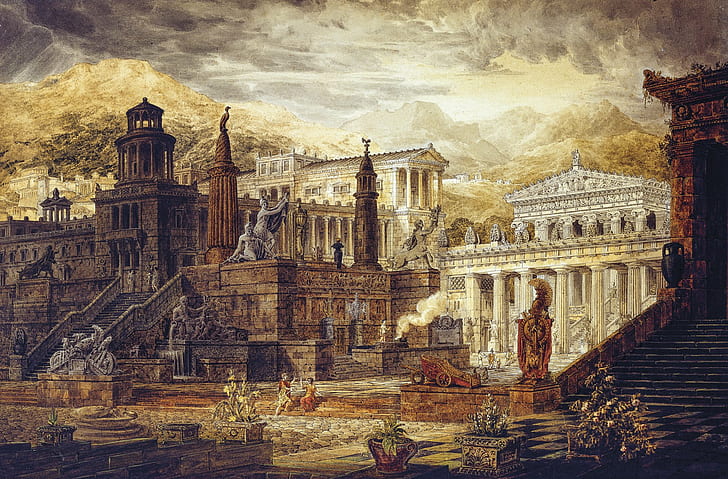The Timeless Beauty of Classical Greek Paintings
 Posted On
Posted On
The classical Greek era, spanning from the 5th to the 4th century BCE, was a pivotal period in the history of art and culture. While we often associate ancient Greece with its magnificent sculptures and architecture, it’s important not to overlook the rich tradition of painting that flourished during this time. Greek paintings from this era are an exquisite testament to the artistic prowess and aesthetic sensibilities of the ancient Greeks.
1. The Fragile Legacy of Greek Painting
One of the intriguing aspects of Greek painting is that very few original works have survived the ravages of time. Unlike the durable marble sculptures that have endured for centuries, most Greek paintings were created on fragile materials such as wood panels, cloth, or walls. Consequently, only a handful of paintings from this era have made it to the modern day, largely through the preservation efforts of the Roman Empire.
2. The Transition from Frescoes to Panel Paintings
During the Archaic period, Greek artists primarily worked on frescoes, painting directly onto the walls of buildings. However, as artistic techniques advanced, the transition to panel paintings became evident. These panel paintings, known as “pinakes,” were often small and portable, featuring intricate details and vibrant colors. They served various purposes, from adorning homes to decorating temples and even acting as grave offerings.
3. Themes and Subjects
Classical Greek paintings drew inspiration from various sources, including mythology, history, and everyday life. Many works depicted scenes from Greek mythology, such as the adventures of the gods and heroes. One famous example is the “Apotheosis of Homer,” which portrays the epic poet Homer being crowned by the muses. These paintings not only celebrated Greek culture but also served as educational tools, conveying moral lessons and historical narratives.
4. The Mastery of Perspective and Proportion
Greek painters were pioneers in the use of perspective and proportion, which played a crucial role in their works’ realism and depth. They employed techniques like foreshortening to create the illusion of three-dimensionality, and their understanding of anatomical accuracy was exceptional. This mastery of form and proportion is evident in paintings such as the “Kritios Boy” and “The Wedding of Alexander and Roxane.”
5. Color Palette and Pigments
Greek painters utilized a wide range of pigments made from natural materials, including minerals and plant extracts. They favored earthy tones such as ochre and sienna but also incorporated vibrant colors like red, blue, and green. The choice of colors was carefully selected to convey emotions and enhance the narrative of the painting. The famous “Stag Hunt” from the late Classical period is a testament to the Greek mastery of color and its ability to evoke a sense of movement and drama.
6. Legacy and Influence
Greek painting had a profound influence on the art of subsequent civilizations, most notably the Romans. The Romans admired and sought to emulate Greek art, often commissioning copies of famous Greek paintings. The Hellenistic period, which followed the classical era, also continued to draw inspiration from Greek art, further solidifying its enduring legacy.
Despite the scarcity of surviving examples, the classical Greek era left an indelible mark on the history of painting. The exquisite craftsmanship, attention to detail, and commitment to representing the human form and the world around them have left us with a small but significant collection of paintings that continue to captivate and inspire art enthusiasts and scholars to this day. These ancient Greek paintings remind us of the timelessness of artistic beauty and the enduring legacy of a civilization that valued aesthetics, creativity, and innovation.



